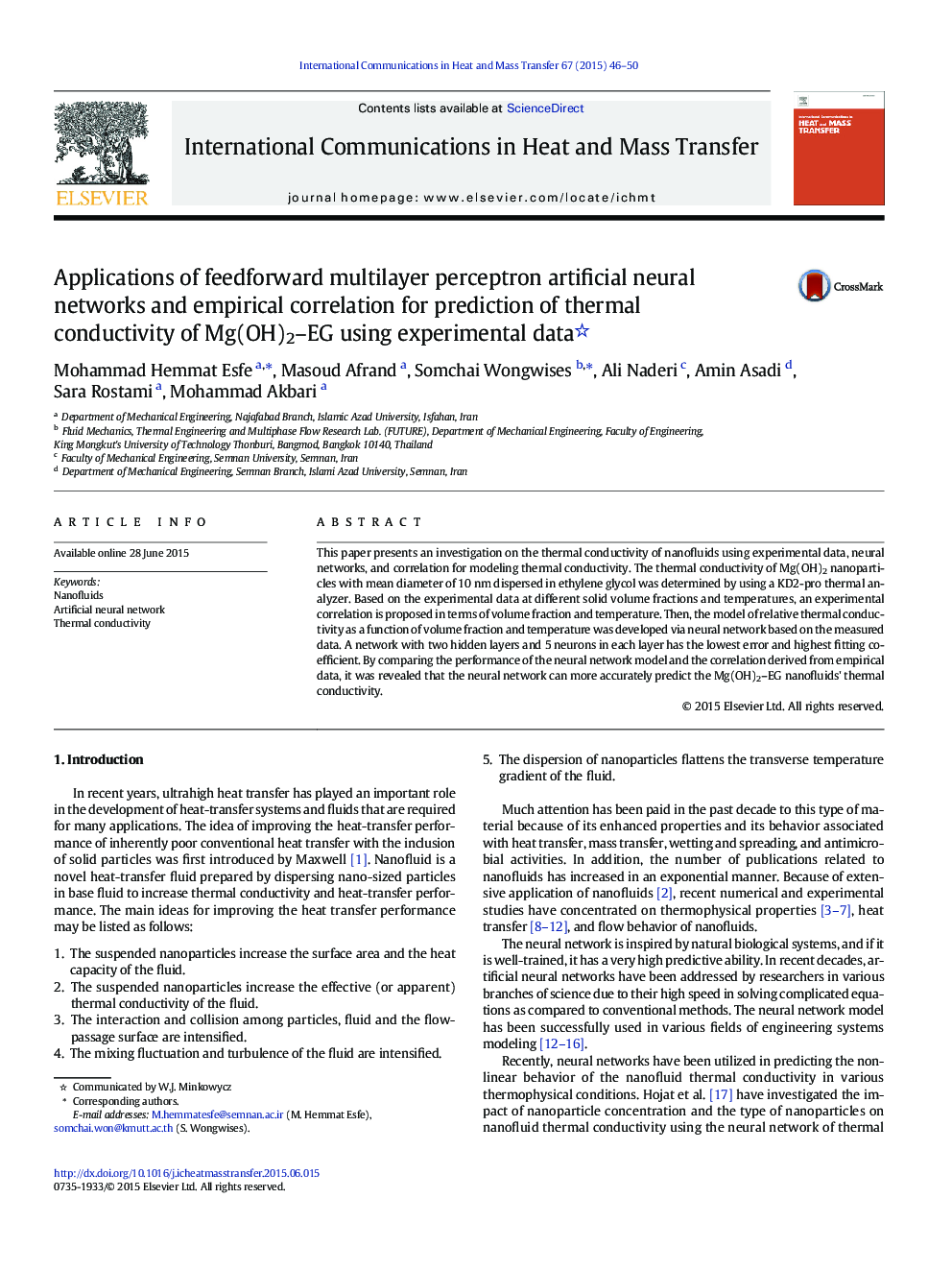| Article ID | Journal | Published Year | Pages | File Type |
|---|---|---|---|---|
| 653069 | International Communications in Heat and Mass Transfer | 2015 | 5 Pages |
Abstract
This paper presents an investigation on the thermal conductivity of nanofluids using experimental data, neural networks, and correlation for modeling thermal conductivity. The thermal conductivity of Mg(OH)2 nanoparticles with mean diameter of 10Â nm dispersed in ethylene glycol was determined by using a KD2-pro thermal analyzer. Based on the experimental data at different solid volume fractions and temperatures, an experimental correlation is proposed in terms of volume fraction and temperature. Then, the model of relative thermal conductivity as a function of volume fraction and temperature was developed via neural network based on the measured data. A network with two hidden layers and 5 neurons in each layer has the lowest error and highest fitting coefficient. By comparing the performance of the neural network model and the correlation derived from empirical data, it was revealed that the neural network can more accurately predict the Mg(OH)2-EG nanofluids' thermal conductivity.
Related Topics
Physical Sciences and Engineering
Chemical Engineering
Fluid Flow and Transfer Processes
Authors
Mohammad Hemmat Esfe, Masoud Afrand, Somchai Wongwises, Ali Naderi, Amin Asadi, Sara Rostami, Mohammad Akbari,
